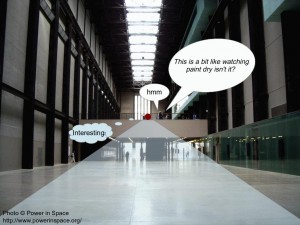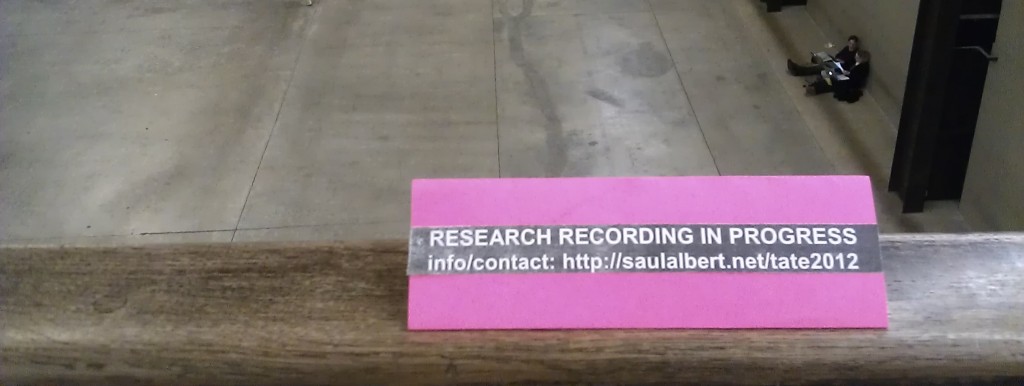A corpus of naturalistic audio and video recordings of people’s spontaneous interactions as they lean over the balcony of the Turbine Hall, watching and often discussing the action on the floor below during the exhibition of artist Tino Sehgal‘s piece These Associations.
The project aims to build a corpus of data to enable a study (as a component of my PhD with Pat Healey) of the ways people negotiate, assess and account for their experiences and understandings in this context through conversational interaction.
The Tate Modern in London is the most visited gallery in the world, its 3400 square meter Turbine Hall, a vast concrete and steel cuboid chamber, has hosted a large-scale annual contemporary art commission since the gallery opened in the year 2000. Over 20,000 people can visit on a peak day, mostly in small groups, almost all passing through the Turbine Hall, talking and interacting while moving between the restaurants, lecture theatres, shops or the exhibitions held in more conventional gallery spaces on the upper floors.
In 2012 artist Tino Sehgal was commissioned to create an artwork for the Turbine Hall entitled These Associations. Sehgal, a trained choreographer, recruited over 200 paid participants and trained them to perform a series of group movements on the ground floor of the Hall, such as ‘flocking’ and other rule-constrained movements. From July-October 2012, up to 60 participants at a time were employed throughout the opening hours of the gallery to alternate between blending into the crowd, then performing movement sequences, sometimes breaking away from the group to engage visitors in unscripted conversations.

The recordings did not capture conversations between participants and visitors or focus on those who were directly involved in the piece itself. Instead, a microphone was placed in the centre of the balcony on the first floor of the Turbine Hall. When people came and stood next to the microphone, overlooking the hall and talked, often watching the action on the floor below, we were able to capture their responses to this context interleaved with other topics and issues.
Sehgal has requested that his work is not documented photographically, and I have agreed not to show photographs or video of the piece in my research presentations. However, photography by members of the public was not prohibited during the piece, and Ann Jones has done a nicely illustrated write-up here.
